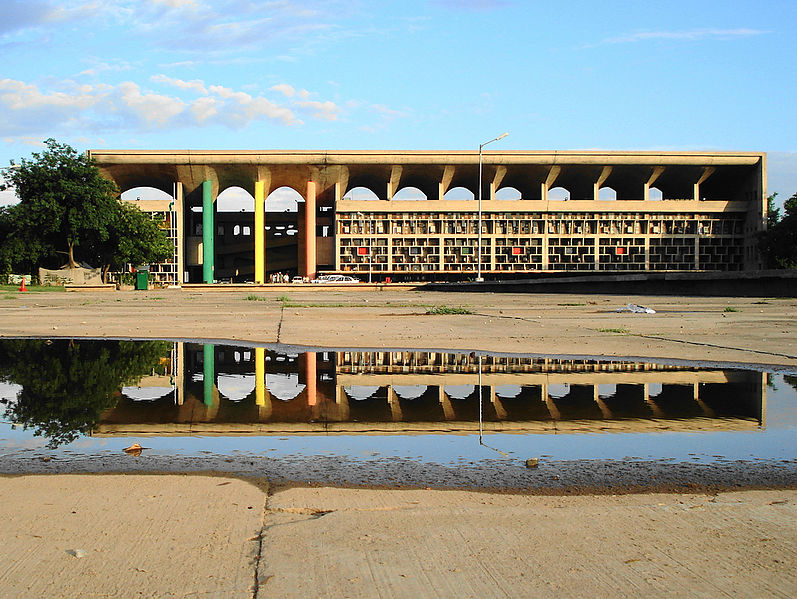The two rich states of India boast of a capital city that is as pure and beautiful as silver: Chandigarh. The capital of the two states of Punjab and Haryana, the city gets its name from two words: ‘chandi’, referring to a Hindu goddess, and ‘garh’, meaning a place or a fort.
While there are innumerable reasons why everyone must travel to this picture-perfect city, if you are an architecture enthusiast, Chandigarh shall top your bucket list for India and we’ll tell you why.

Architecture Alert!
One of the earliest planned cities of post-independence India, Chandigarh was designed by Swiss-French architect, Le Corbusier. The city is a strong reflection of colonial rule in its layout and setting. It makes for an ideal place for students studying architecture to understand this aspect of colonial rule. Divided into various sectors in the ratio of 800 metres by 1,200 metres, the city is enclosed by an exceptional structure of roadways and greenery for a comfortable and serene life. And because the city of Chandigarh does not allow vehicles to enter the green strip, peace prevails.
Corbusier’s Selectives
Chandigarh happens to be one of the most ambitious projects of the iconic architect, urban planner and pioneer of modern architecture, Le Corbusier. The city plan was initially laid by American architect Albert Mayer and Polish architect Maciej Nowicki, and completed by Corbusier. A major attraction of the city, the Capital Complex, which constitutes the Palace Assembly, the High Court of Justice and the Secretariat building, is marked as one of the most iconic structures by Corbusier.

The Hand Matters
In the heart of the Capital Complex lies ‘The Open Hand’, the official emblem of Chandigarh. In 1948, Corbusier presented the Open Hand to the then Prime Minister, Pandit Jawaharlal Nehru, which was then placed in Chandigarh facing the Himalayas, according to the wishes of the Prime Minister. The logo is symbolic of the new hopes and ideas that led to the building of the nation right after independence. Based on the struggles of the war for freedom and the movement towards growth, the logo represents ‘the freedom to give, and the freedom to take’.

Architecture Goes Green
Known as one of the cleanest cities of India, a lot of rightful credit goes to the layout and plan of the city that facilitates this. The sectors have been designed in such a way that the residential areas stand fairly away from the disturbing vehicular noises, because of the placement of the roads and the barring of traffic in certain areas. The city plan also focuses on a fresh and healthy environment, with well-kept green strips in every sector.
The story of Chandigarh’s architectural marvels does not end here. It is in fact incomplete without the mention of the popular ‘Rock Gardens’. Also known as Nek Chand’s Rock Garden, it is actually a sculpture garden with numerous sculptures of humans and other forms made of scrap material like plastic bottles, auto parts, clay, coal, marbles, forks, frames, tiles, ceramic pots, electrical waste and accessories like bangles. The park suggests that waste, when reused well, can create unbelievable marvels.
Another must-visit feature of Chandigarh is the enthralling man-made lake, Lake Sukhna. It is not just famous for its enchanting beauty, but also for its recreational activities. Corbusier had long thought about the need for a water body as this in the city. Not only would it be an inspiration to keep the city clean, but it would also make for a place where the citizens could engage in healthy and active sessions. Now, the lake has a membership-based Lake Club with facilities like a gym, indoor games, a swimming pool and tennis courts, and activities like rowing, sculling, sailing, kayaking and water skiing.

The Essence of Chandigarh
The citizens of Chandigarh take unparalleled pride in the beauty and sanctity of the city. Chandigarh can be crowned as a city whose architecture has indeed shaped its beliefs, lifestyle and environment. With each lane, road and structure having a story of its own, the city is alive in its every being.
No wonder it is an architectural ode. And take our word when we say this: truly, justice to a visit to Chandigarh would be through walks that reveal the tales and muses that make Chandigarh what it is.

